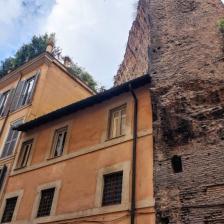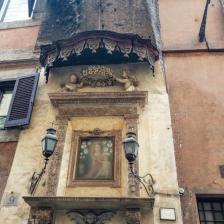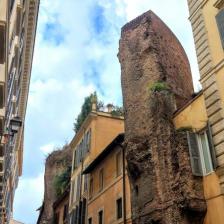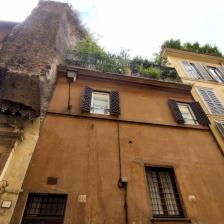
A thousand stories in just one city
The best way to get to know a city is wandering and getting lost among its streets: by straying just a little bit from the most touristy routes, we will discover an unseen and “off the beaten track” face of Rome, a tangle of fascinating and peculiar stories hidden behind the thousand alleys of the historic center. The task of remembering them and keeping them alive is sometimes entrusted, at least in part, to the street signs: strange names with an ancient flavor capable, for example, of bringing back the lost memory of artisans and workshops, as in Via dei Chiavari (key-makers), Via dei Falegnami (carpenters) or Via dei Coronari (rosary beads)... However, street names are not always easy to decipher: this is the case of the seemingly unremarkable little street buried in the middle of the Rione Pigna, roughly midway between the Pantheon and the Sacred Area of Largo di Torre Argentina: Via dell’Arco della Ciambella.
The first public baths in Rome
Although the word “ciambella” refers to an Italian doughnut-shaped pastry, this has little to do with some gastronomic specialty. In order to understand what the name of the street refers to, we need to go back a long way, to the dawn of the Roman Empire. More precisely between 25 and 19 B.C., when Consul Marcus Vipsanius Agrippa (a trusted friend and son-in-law of Augustus) had a grandiose bath complex built in this area of the Campus Martius, which at his death he left to the Roman people, for their free use. Supplied with water by the Aqua Virgo aqueduct, the first public baths of ancient Rome were magnificently adorned with frescoes, mosaics and statues: here, for example, was the famous and admired Apoxyomenos by the Greek sculptor Lysippus, of which today only a marble copy remains, resurfaced in the 19th century in Trastevere’s Vicolo dell’Atleta, and preserved in the Vatican Museums. Repeatedly restored in later centuries and still functioning in the 5th century, the baths began to be dismantled as early as the 7th century and their materials were reused as usual for new construction.
The remains of the “donut”
Back to our little street: as we lift our gaze, behind a couple of houses that hide it and lean against it we can see an extensive Roman ruin, about 10 meters high. It is almost all that remains of the baths, a portion of what was probably the calidarium, a domed covered circular hall about 25 meters in diameter that was the center of the whole complex. The opening of the street in 1542 cut the circular building exactly in half. However, the hall still remained almost intact until the early 17th century, as prints and sketches show us. Because of its shape, Romans familiarly called it “Rotulo”, “Tondo”, “Torrione”, or, indeed, “Ciambella”, a name attested since the early 16th century. Urban development work in the area ordered by Pope Gregory XV in 1621 proved fatal for the ancient ruins: an engraving by the Dutch painter Bonaventura van Overbeek, dated 1708, shows that the building and the archway that allowed its passage had by then been almost completely demolished, leaving the street free of obstructions more or less as it appears to us now.
The miraculous Madonnella
But the curiosities of the small street do not end there. Under the remnants of the “ciambella” a beautiful tabernacle houses a 19th-century copy of the “Madonna of the Rosary”. Considered miraculous and therefore revered, along with other Madonnelles in the city the holy image allegedly moved her eyes and shed tears for nearly 20 days between July and August 1796, in the imminence and inevitability of the French invasion of the Papal States. Complemented by a wooden canopy, a shelf with two lampposts and a kneeler, the ancient aedicule belonged to the Capparucci family, which celebrated a solemn feast in her honor here on the first Sunday in October by adorning the image with myrtle branches, lights and streamers. At the end of the 19th century, when the family moved away, they took the image with them, and since then all trace of it has been lost. The copy now displayed in the shrine was commissioned a few years later by a local carpenter from the painter Pietro Campofiorito, and represents the Madonna holding the Child and a rosary in her right hand.
Siete calles de encanto bestial
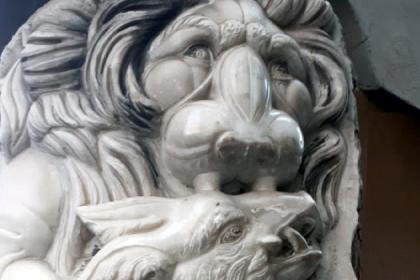
Le vie intitolate al mondo animale, un viaggio tra orsi, scimmie, leoni e,,,
Siete ejemplos de l’arte de poner apodos
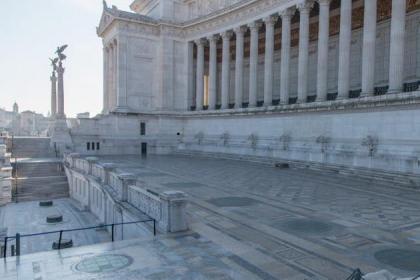
L'arte dei soprannomi: la fantasia popolare al potere
The Madonnelle of Rome
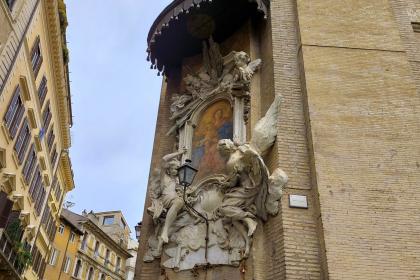
The charming street shrines dedicated to the Virgin Mary and their many stories
Sette strade per sette mestieri
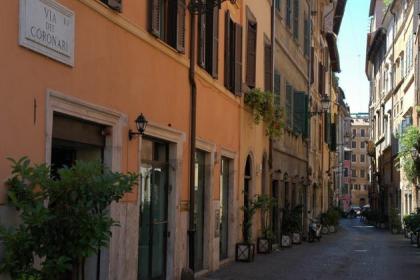
Vie e vicoli del centro storico tramandano il ricordo degli antichi mestieri della città
El Panteón
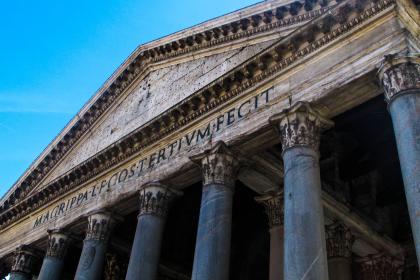
 Condividi
Condividi
Area sacra di Largo Argentina - Area sagrada de “Largo Argentina”
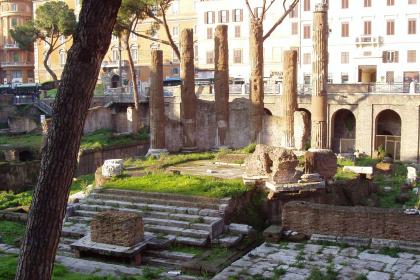
 Condividi
Condividi












































